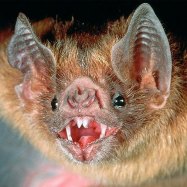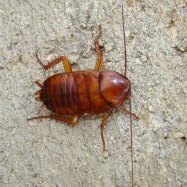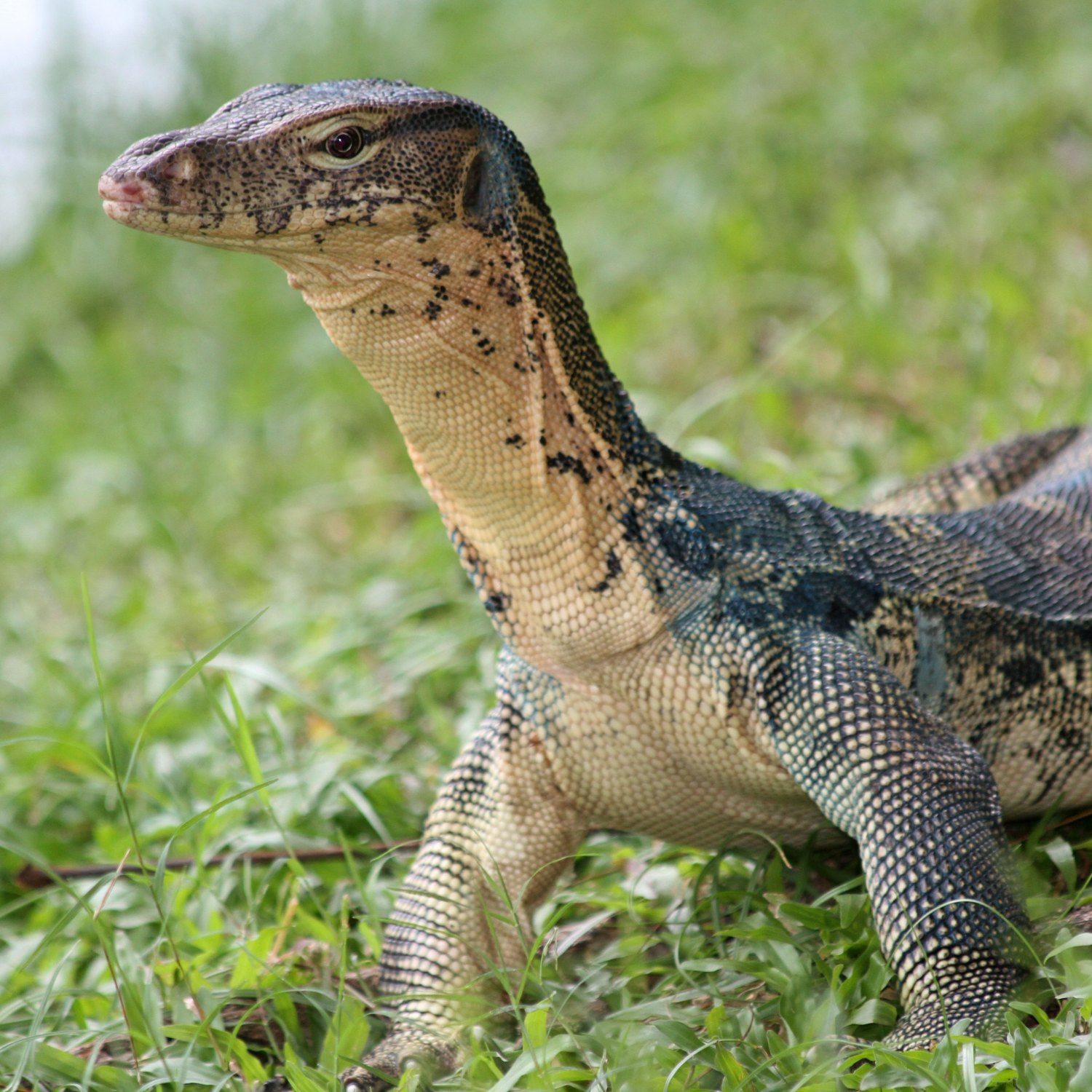
Asian Water Monitor
Asian Water Monitors can grow up to 2-3 meters in length.
The Asian Water Monitor is a fascinating reptile found in Southeast Asia. As part of the Varanidae family, it has a long and muscular body, a large head, and a long tail. These impressive creatures can reach up to 2-3 meters in length and weigh up to 25-30 kilograms. Keep an eye out for them on your next trip to this region! #AsianWaterMonitor #SoutheastAsia #Reptiles
Animal Details Summary:
Common Name: Asian Water Monitor
Kingdom: Animalia
Habitat: Asian Water Monitors are found in a wide range of habitats including rainforests, swamps, mangroves, rivers, and lakes. They are excellent swimmers and can also be seen near human settlements and agricultural areas.
The Magnificent Asian Water Monitor: A Master of Adaptability
The wild world is full of magnificent creatures, each with their unique abilities and traits. Among them is the Asian Water Monitor, a formidable reptile that has captured the attention of many nature enthusiasts and researchers. With its scientific name Varanus salvator, this reptile has crept its way into our hearts. It is commonly known as the Asian Water Monitor, and it belongs to the kingdom Animalia, phylum Chordata, and class Reptilia Asian Water Monitor.Found mainly in Southeast Asia, this creature belongs to the order Squamata and the family Varanidae. This magnificent animal can be found in various habitats, from rainforests and swamps to human settlements and agricultural areas, making it a versatile and adaptable creature. In this article, we will delve deeper into the characteristics and lifestyle of this magnificent creature and discover what makes it stand out in the animal kingdom.
The Habitat of the Asian Water Monitor
One of the most fascinating features of the Asian Water Monitor is its adaptability to a wide range of habitats. These reptiles are found in various countries in Southeast Asia, including India, Sri Lanka, Myanmar, Thailand, Cambodia, and Indonesia. They can thrive in diverse environments, from dense rainforests and mangroves to wetlands, rivers, and lakes. This adaptability is made possible by their excellent swimming abilities, making them well-suited to their aquatic habitat.One might wonder why these creatures are called Asian Water Monitors if they can be found in various habitats. The answer lies in their preference for wet environments and their exceptional swimming abilities Anole Lizard. These reptiles spend most of their time in the water, using it as a means of cooling down, movement, and, most importantly, hunting.
Feeding Habits of the Asian Water Monitor
The Asian Water Monitor is a formidable predator, known for its carnivorous feeding habits. These reptiles have a diverse diet, including fish, amphibians, birds, small mammals, and even other reptiles. They have sharp teeth and a powerful bite, allowing them to capture and devour their prey with ease. They also have a unique hunting technique, where they will wait patiently underwater for their prey to come close before striking with lightning-fast speed.Given their wide-ranging diet, it is not surprising that these creatures are at the top of their food chain in their respective habitats. However, they also play an essential role in maintaining the balance of their ecosystem by keeping populations of other animals in check.
The Physical Characteristics of the Asian Water Monitor
The Asian Water Monitor is a sight to behold, with its dark brown to black coloration, marked with striking yellow or cream-colored bands and spots. These markings are essential for camouflage and play a significant role in their survival in the wild. These reptiles have a long and muscular body, with a large head and a long tail, making up their distinctive appearance. They can grow up to 2-3 meters in length and weigh up to 25-30 kilograms, making them the second-largest lizard species in the world after the Komodo dragon.These creatures are ectothermic, which means they rely on external sources to regulate their body temperature. To cool down, they often bask in the sun, and to warm up, they submerge themselves in water. This allows them to adjust their body temperature according to their environment, making them well-suited to a wide range of habitats.
The Conservation Status of the Asian Water Monitor
Despite their adaptability and widespread distribution, the Asian Water Monitor is facing several threats in the wild. Habitat destruction and human-animal conflict are some of the significant factors that have led to a decline in their population. These reptiles are also hunted for their meat, skin, and body parts, which are believed to have medicinal properties in some cultures.However, some efforts have been made to protect and conserve these magnificent creatures. Many countries in Southeast Asia have designated protected areas for the Asian Water Monitor to thrive, and conservation programs have been implemented to educate people about the importance of preserving their natural habitat. Additionally, the international trade of this species is regulated under the Convention on International Trade in Endangered Species of Wild Fauna and Flora (CITES).
The Significance of Asian Water Monitors in Southeast Asia
Apart from being a fascinating creature to study and admire, the Asian Water Monitor plays a crucial role in the ecosystem of Southeast Asia. Their presence helps regulate the populations of other animals, keeping the balance in check. These reptiles also serve as an indicator of a healthy ecosystem, as they are highly sensitive to environmental changes.Furthermore, these creatures have a cultural and historical significance in Southeast Asia. They are often featured in local myths and stories, where they are revered for their strength, intelligence, and adaptability. They are also kept as pets in some parts of the world, showcasing their unique relationship with humans.
Conclusion
In conclusion, the Asian Water Monitor is a formidable and magnificent creature, endowed with unique abilities and traits. Its adaptability and versatility allow it to thrive in various environments, making it a vital member of the ecosystem in Southeast Asia. However, these creatures face threats in the wild, and steps must be taken to ensure their conservation. The more we learn about these animals, the more we can appreciate and preserve their existence, ensuring that future generations can also marvel at the remarkable Asian Water Monitor.

Asian Water Monitor
Animal Details Asian Water Monitor - Scientific Name: Varanus salvator
- Category: Animals A
- Scientific Name: Varanus salvator
- Common Name: Asian Water Monitor
- Kingdom: Animalia
- Phylum: Chordata
- Class: Reptilia
- Order: Squamata
- Family: Varanidae
- Habitat: Asian Water Monitors are found in a wide range of habitats including rainforests, swamps, mangroves, rivers, and lakes. They are excellent swimmers and can also be seen near human settlements and agricultural areas.
- Feeding Method: Carnivorous
- Geographical Distribution: Asian Water Monitors are native to Southeast Asia, including countries such as India, Sri Lanka, Myanmar, Thailand, Cambodia, and Indonesia.
- Country of Origin: Southeast Asia
- Location: They can be found in various countries in Southeast Asia.
- Animal Coloration: Asian Water Monitors have a dark brown to black coloration with yellow or cream-colored bands and spots on their body and tail.
- Body Shape: Asian Water Monitors have a long and muscular body with a large head and a long tail. They can grow up to 2-3 meters in length and weigh up to 25-30 kilograms.
- Length: Asian Water Monitors can grow up to 2-3 meters in length.
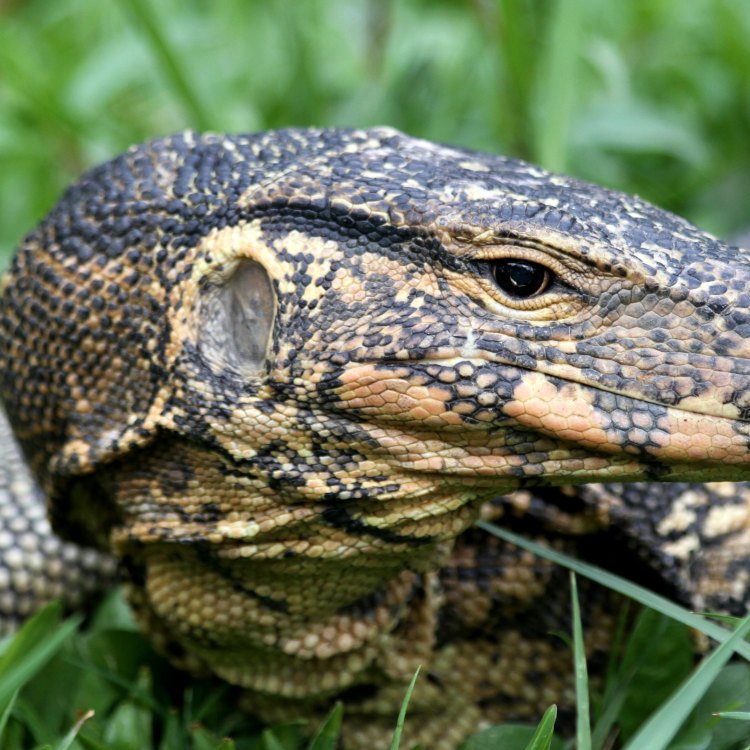
Asian Water Monitor
- Adult Size: Adult Asian Water Monitors can reach a size of 2-3 meters in length.
- Average Lifespan: The average lifespan of Asian Water Monitors in the wild is around 20-25 years.
- Reproduction: Asian Water Monitors reproduce sexually.
- Reproductive Behavior: During the breeding season, male Asian Water Monitors engage in combat for mating rights with females. Females lay 20-30 eggs in nests dug in sandy areas or under vegetation.
- Sound or Call: Asian Water Monitors make hissing and growling sounds when threatened or during mating rituals.
- Migration Pattern: There are no specific migration patterns known for Asian Water Monitors.
- Social Groups: Asian Water Monitors are solitary animals and do not form social groups.
- Behavior: Asian Water Monitors are primarily diurnal (active during the day). They are excellent climbers, swimmers, and burrowers. They are known to be aggressive and territorial.
- Threats: The main threats to Asian Water Monitors include habitat loss, poaching for their skin and meat, and pollution of their aquatic habitats.
- Conservation Status: Asian Water Monitors are listed as Least Concern by the IUCN (International Union for Conservation of Nature).
- Impact on Ecosystem: Asian Water Monitors play a significant role in their ecosystem as top predators. They control populations of prey species and help maintain the balance of the food chain.
- Human Use: Asian Water Monitors are sometimes kept as pets, although they require specialized care. In some countries, they are also hunted for their skin and meat.
- Distinctive Features: Asian Water Monitors have a long, forked tongue and a sharp sense of smell. They also have powerful limbs and a strong bite.
- Interesting Facts: 1. Asian Water Monitors are one of the largest species of lizards in the world. 2. They are capable of diving and can stay underwater for extended periods. 3. Asian Water Monitors have a unique way of thermoregulating by using the water and the sun to control their body temperature. 4. They have a remarkable ability to regenerate lost tails.
- Predator: Adult Asian Water Monitors have few natural predators, but their eggs and young are vulnerable to predation by birds, snakes, and mammals.
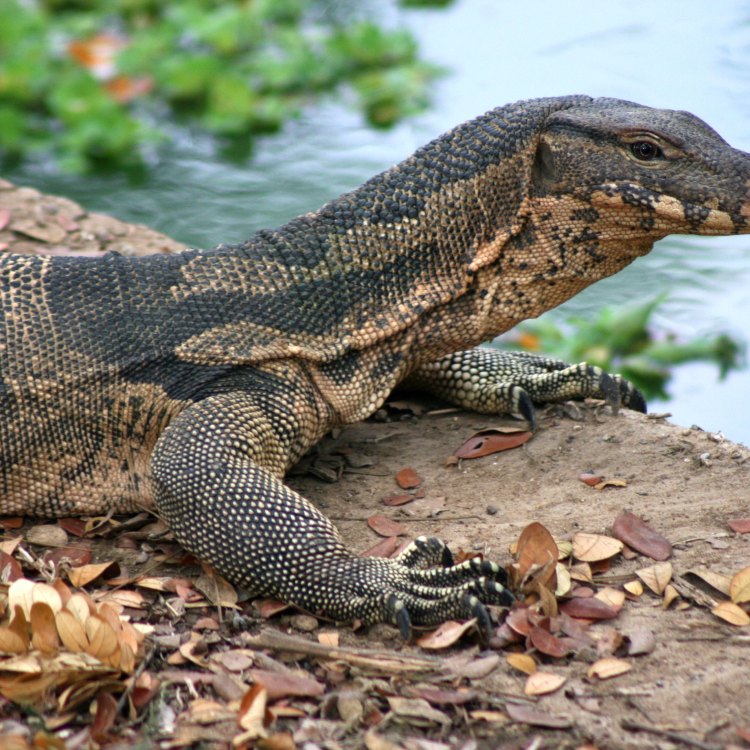
Varanus salvator
The Mighty Asian Water Monitor: A Fascinating Reptile of the East
Deep in the heart of the tropical forests and wetlands of Asia, a fierce and formidable reptile rules the land and water - the Asian Water Monitor. With its large size, impressive strength, and sharp sense of survival, this lizard has long captured the fascination and fear of humans. In this article, we will explore the unique features and behaviors of this magnificent creature and understand its crucial role in its ecosystem.The Mighty Size and Lifespan of the Asian Water Monitor
The Asian Water Monitor (Varanus salvator) is one of the largest species of lizards in the world, reaching an adult size of 2-3 meters in length and weighing up to 50 kilograms PeaceOfAnimals.Com. These impressive dimensions make it the second-largest lizard after the famous Komodo Dragon.But size is not the only remarkable feature of this reptile. The average lifespan of Asian Water Monitors in the wild is around 20-25 years, with some individuals even living up to 30 years in captivity. This long lifespan allows them to play a significant role in their ecosystem and form a vital part of the food chain.
Reproduction and Unique Reproductive Behavior
Asian Water Monitors reproduce sexually, with males competing fiercely for the right to mate with females. During the breeding season, male Monitors engage in intense combat, displaying their strength and dominance to impress the female. The winner then mates with the female, and she will lay 20-30 eggs in nests dug in sandy areas or under vegetation.The Sounds of the Asian Water Monitor
If you're wandering around the habitat of the Asian Water Monitor and suddenly hear a loud hissing or growling sound, don't be alarmed - it's just the Monitor communicating. These sounds are often used as defensive measures when the lizard feels threatened, or during mating rituals to attract a mate Alligator Gar.Ambassador of the Land and Water
Unlike some animals that embark on epic migrations each year, Asian Water Monitors are known to have no specific migration patterns. They are primarily solitary animals, comfortable in their own company. However, this doesn't mean they are not active. In fact, they are primarily diurnal creatures, meaning they are most active during the day. They are known to be excellent climbers, swimmers, and burrowers, adapting effortlessly to their environment.The Aggressive and Territorial Nature of the Asian Water Monitor
While these lizards may seem docile when observed from a distance, they are known to have aggressive and territorial tendencies. As top predators in their ecosystem, they defend their territory fiercely and will not hesitate to attack if they feel threatened. It is essential to keep a safe distance from them when encountering them in the wild.Threats to the Asian Water Monitor
Like many creatures in the world, Asian Water Monitors also face various threats to their existence. Habitat loss due to deforestation, poaching for their skin and meat, and pollution of their aquatic habitats are some of the significant threats that these lizards face. It is essential to take measures and raise awareness to protect and conserve these magnificent creatures.The Conservation Status of the Asian Water Monitor
The Asian Water Monitor holds a special place in the hearts of conservationists and reptile enthusiasts. They are listed as Least Concern by the International Union for Conservation of Nature (IUCN), meaning their population is stable and does not face an immediate threat of extinction. However, continuous efforts to monitor and protect their habitats are necessary to ensure their long-term survival.The Role of the Asian Water Monitor in its Ecosystem
As top predators, Asian Water Monitors play a crucial role in their ecosystem. They control the population of prey species, helping to maintain the balance of the food chain. Their strong and adaptable nature makes them essential to the survival of their habitat.The Impact of Humans on Asian Water Monitors
While we may admire and fear these powerful creatures, we must remember that human influence can have a significant impact on them. With increasing human activities such as deforestation and pollution, the habitats of Asian Water Monitors are threatened, and their survival at risk. It is vital to educate and raise awareness to preserve and protect these unique reptiles.Unique Features of the Asian Water Monitor
Aside from their impressive size, there are many other unique features that make the Asian Water Monitor stand out. These lizards have a distinct long, forked tongue, which they use to sense their environment and locate their prey. They also have a sharp sense of smell that helps them hunt and track their prey. Their powerful limbs and strong bite make them formidable predators in the wild.Interesting Facts about the Asian Water Monitor
- Asian Water Monitors are excellent divers and can stay underwater for extended periods, with some observations of up to 30 minutes. This ability makes them efficient hunters.- Unlike other reptiles, Asian Water Monitors have a unique way of thermoregulating. They use both the water and the sun to control their body temperature, allowing them to thrive in various environments.
- These lizards have a remarkable ability to regenerate lost tails, making them one of the few animals capable of this feat.
- The Monitor is an essential animal in traditional Chinese medicine, where its blood and bile are often used in traditional remedies and herbal teas.
The Predator of the Asian Water Monitor
Adult Asian Water Monitors have few natural predators in the wild, thanks to their large size and aggressive nature. However, their eggs and young are vulnerable to predation by birds, snakes, and other mammals. This is another reason why conservation efforts are critical in preserving their populations.Human Use of Asian Water Monitors
The Asian Water Monitor is sometimes kept as a pet, although they require specialized care and are not suitable for novice reptile owners. In some countries, such as Bangladesh and Thailand, they are also hunted for their skin and meat. Proper conservation measures need to be in place to ensure these activities are sustainable and do not harm their populations.In conclusion, the Asian Water Monitor is a truly magnificent and fascinating creature of the East. With its impressive size, unique characteristics, and crucial role in its ecosystem, it deserves our admiration and protection. It is up to us humans to ensure that these majestic lizards continue to thrive in their natural environment for generations to come. Let us work together to conserve and coexist with these mighty reptiles of the land and water.
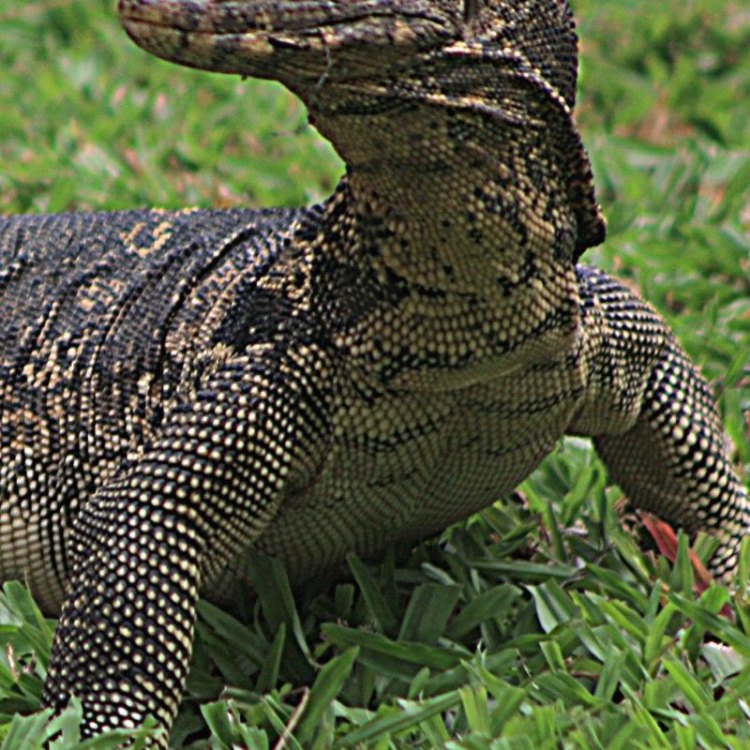
The Magnificent Asian Water Monitor: A Master of Adaptability
Disclaimer: The content provided is for informational purposes only. We cannot guarantee the accuracy of the information on this page 100%. All information provided here may change without prior notice.






